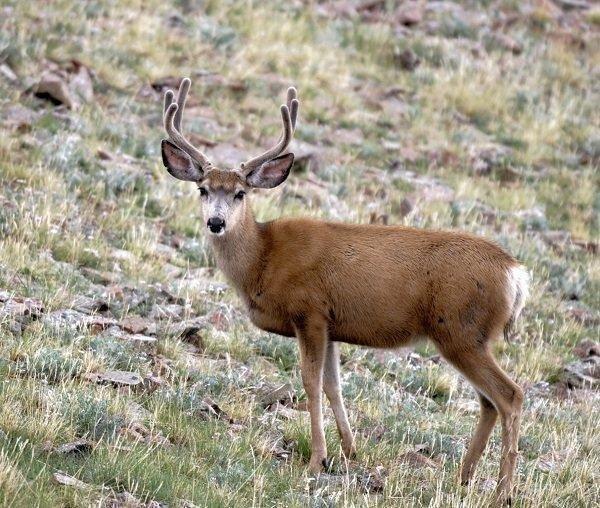Utah Department of Wildlife Resources Press Release
With the start of Utah’s first major hunt on Aug. 16, biologists with the Utah Division of Wildlife Resources have good news. In almost every area of the state, the number of buck deer will be similar to, or better than it was last fall.
Two more units have been added to the list of where deer hunters who have an antlerless elk-control permit, can take a cow elk during the archery buck deer hunt.
More information about antlerless elk-control permits is available on page 21 of the 2014 Utah Big Game Field Regulations Guidebook. You can get the free guidebook at www.wildlife.utah.gov/guidebooks.
In the southeastern and east-central regions of Utah, hunters can expect good deer numbers.
DWR Regional Assistant Wildlife Manager Brad Crompton predicts a slightly better archery buck deer season across southeastern Utah this fall.
“The number of bucks per 100 does has slowly improved on all of the units,” Crompton said. “Fawn-to-doe ratios in 2013 were above average on all units.”
Crompton said that more yearling buck deer should be available to hunters this fall. He also advised that conditions across the region have been very dry through most of the spring and summer. “Monsoon rains over the past several weeks have improved the quality of the forage and provided more water for the deer,” he explained.
In Nine Mile, Crompton and the biologists he works with manage deer on the southern end of this unit. This area has a high buck-to-doe ratio that is well above the management objective. A large amount of private land on the unit’s summer and fall deer ranges is one of the reasons for this. “Fewer hunters are hunting the deer,” he said. “That allows the number of bucks to grow.”
Crompton explained that the overall number of deer have remained relatively stable over the past five years “Please remember that you must have written permission from the landowner before hunting on their property,” he reminded. “Hunting should be good this fall on both the private lands and the limited public lands that are found on the unit.”
Buck numbers per 100 does have improved gradually over the past several years in the central mountains and Manti/San Rafael units. According to Compton, the overall number of deer have increased.
With more bucks available to hunters, Crompton explained that most archery hunters should focus their attention on areas near Skyline Drive and summer habitat above 8,000 feet. Despite dry conditions through most of the summer, the mountain is very productive, and water is relatively abundant.
Buck-to-doe ratios on the La Sal Mountain range east of Moab have been relatively stable over the past five years. The total number of deer on the unit has probably increased slightly. This unit has a large amount of public land and ample summer range habitat at the higher elevations. To find deer during the archery hunt, Crompton encourages hunting at higher elevations.
Conditions on the Abajo Mountains are very similar to those on the nearby La Sal Mountains. Unlike the La Sal Mountains, buck-to-doe ratios on this range have fluctuated over the past five years. Crompton said the overall number of deer on the unit has probably increased slightly. Just like the La Sal Mountains, he stated that this unit has a large amount of public land and ample summer range habitat at higher elevations.
For further information regarding all archery hunting units in Utah, visit the DWR website at www.wildlife.utah.gov.


